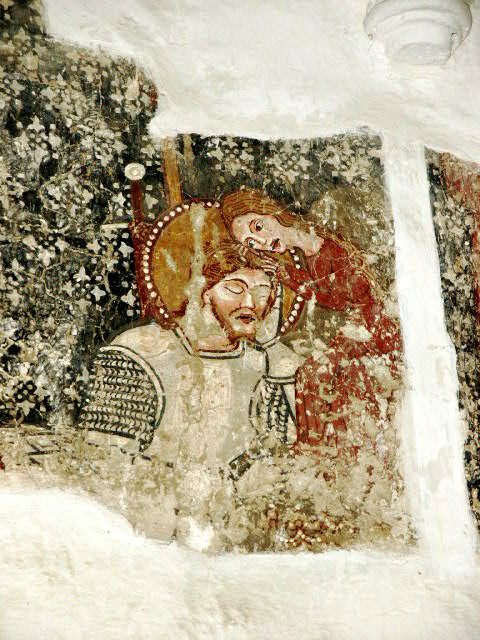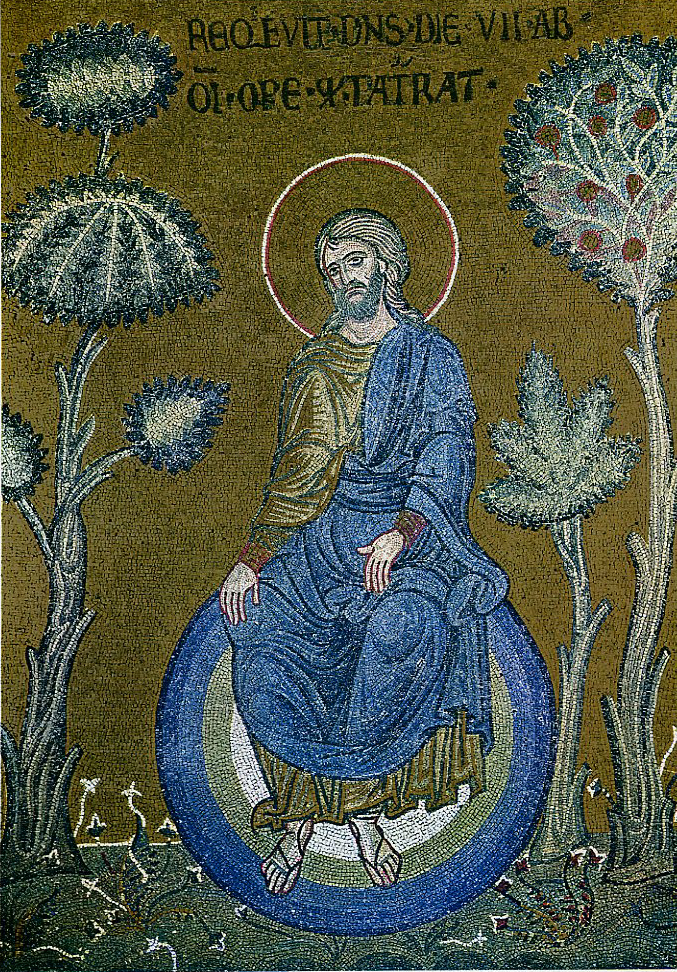|
Summa Universae Theologiae Christianae Secundum Unitarios
Summa Universae Theologiae Christianae secundum Unitarios (English ''A Digest of Christian Theology according to the Unitarians'') is a statement of faith of the Unitarian Church of Transylvania officially recognised by Joseph II in 1782. The subtitle is ''in Usum Auditorum Theologiae concinnata et edita'' (English: ''Compiled and published for the use of students of theology''). The work is traditionally ascribed to Mihály Lombard de Szentábrahám (1737–1758), who revitalized the church after a period of persecution during the 18th century. It remains the official statement of faith of the Unitarian Church in Transylvania, though since the 19th century subscription to it is no longer required. Theology The document is basically Socinian (as the Racovian Catechism) with Arminian modifications. The characteristic Christology of Laelio Sozzini, denying the pre-existence of Christ but accepting the virgin birth,''Summa Universae Theologiae Christianae secundum Unitarios'' XXV ... [...More Info...] [...Related Items...] OR: [Wikipedia] [Google] [Baidu] |
Statement Of Faith
A creed, also known as a confession of faith, a symbol, or a statement of faith, is a statement of the shared beliefs of a community (often a religious community) which summarizes its core tenets. Many Christian denominations use three creeds: the Niceno-Constantinopolitan Creed, the Apostles' Creed and the Athanasian Creed. Some Christian denominations do not use any of those creeds. The term ''creed'' is sometimes extended to comparable concepts in non-Christian theologies. The Islamic concept of ''ʿaqīdah'' (literally "bond, tie") is often rendered as "creed". History The earliest known creed in Christianity, "Jesus is Lord", originated in the writings of Paul the Apostle. One of the most significant and widely used Christian creeds is the Nicene Creed, first formulated in AD 325 at the First Council of Nicaea to affirm the deity of Christ and revised at the First Council of Constantinople in AD 381 to affirm the trinity as a whole. The creed was further affirmed in 43 ... [...More Info...] [...Related Items...] OR: [Wikipedia] [Google] [Baidu] |
Joseph Priestley
Joseph Priestley (; 24 March 1733 – 6 February 1804) was an English chemist, Unitarian, Natural philosophy, natural philosopher, English Separatist, separatist theologian, Linguist, grammarian, multi-subject educator and Classical liberalism, classical liberal Political philosophy, political theorist. He published over 150 works, and conducted experiments in several areas of science. Priestley is credited with his independent discovery of oxygen by the thermal decomposition of mercuric oxide, having isolated it in 1774. During his lifetime, Priestley's considerable scientific reputation rested on his invention of carbonated water, his writings on electricity, and his discovery of several "airs" (gases), the most famous being what Priestley dubbed "dephlogisticated air" (oxygen). Priestley's determination to defend phlogiston theory and to reject what would become the chemical revolution eventually left him isolated within the scientific community. Priestley's science was ... [...More Info...] [...Related Items...] OR: [Wikipedia] [Google] [Baidu] |
History Of Christianity In Romania
The history of Christianity in Romania began within the Roman province of Lower Moesia, where many Christians were martyred at the end of the 3rd century. Evidence of Christian communities has been found in the territory of modern Romania at over a hundred archaeological sites from the 3rd and 4th centuries. However, sources from the 7th and 10th centuries are so scarce that Christianity seems to have diminished during this period. The vast majority of Romanians are adherent to the Eastern Orthodox Church, while most other populations that speak Romance languages follow the Catholic Church. The basic Christian terminology in Romanian language, Romanian is of Latin origin, though the Romanians, referred to as Vlachs in medieval sources, borrowed numerous South Slavic languages, South Slavic terms due to the adoption of the liturgy officiated in Old Church Slavonic. The earliest Romanian translations of religious texts appeared in the 15th century, and Bucharest Bible of 1688, the fi ... [...More Info...] [...Related Items...] OR: [Wikipedia] [Google] [Baidu] |
1782 In Christianity
Year 178 ( CLXXVIII) was a common year starting on Wednesday of the Julian calendar. At the time, it was known as the Year of the Consulship of Scipio and Rufus (or, less frequently, year 931 ''Ab urbe condita''). The denomination 178 for this year has been used since the early medieval period, when the Anno Domini calendar era became the prevalent method in Europe for naming years. Events By place Roman Empire * Bruttia Crispina marries Commodus, and receives the title of '' Augusta''. * Emperor Marcus Aurelius and his son Commodus arrive at Carnuntum in Pannonia, and travel to the Danube to fight against the Marcomanni. Asia * Last (7th) year of ''Xiping'' era and start of ''Guanghe'' era of the Chinese Han dynasty. * In India, the decline of the Kushan Empire begins. The Sassanides take over Central Asia. Religion * The Montanist heresy is condemned for the first time. Births * Lü Meng, Chinese general (d. 220) * Peng Yang, Chinese official (d. 214) * ... [...More Info...] [...Related Items...] OR: [Wikipedia] [Google] [Baidu] |
Thomas Belsham
Thomas Belsham (26 April 175011 November 1829) was an English Unitarian minister. Life Belsham was born in Bedford, England, and was the elder brother of William Belsham, the English political writer and historian. He was educated at the dissenting academy at Daventry, where for seven years he acted as assistant tutor. After three years spent in a charge at Worcester, he returned as head of Daventry Academy, a post which he continued to hold till 1789, when, having adopted Unitarian principles, he resigned. With Joseph Priestley for colleague, he superintended during its brief existence the New College at Hackney, and was, on Priestley's departure in 1794, also called to the charge of the Gravel Pit congregation. In 1805, he accepted a call to the Essex Street Chapel, which was also headquarters and offices of the Unitarian Church under John Disney, there succeeding as minister Theophilus Lindsey who had retired and died three years later in 1808. Belsham remained at ... [...More Info...] [...Related Items...] OR: [Wikipedia] [Google] [Baidu] |
Institutes Of Natural And Revealed Religion
The ''Institutes of Natural and Revealed Religion'', written by 18th-century English Dissenting minister and polymath Joseph Priestley, is a three-volume work designed for religious education published by Joseph Johnson between 1772 and 1774. Its central argument is that revelation and natural law must coincide. Overview The ''Institutes'', published as part of a series of works on religious education, was "a summary of a half-century of the writing of liberal theologians on a number of issues and was to become a standard exposition of beliefs for generations of Unitarians." Priestley's major argument is that only revealed religious truths which conform to the truth of the natural world should be accepted. Because his views of religion were deeply tied to his understanding of nature, the text's theism rests on the argument from design. Many of Priestley's arguments descended from 18th-century deism and comparative religion. Priestley wanted to return Christianity to its "prim ... [...More Info...] [...Related Items...] OR: [Wikipedia] [Google] [Baidu] |
Virgin Birth Of Jesus
In Christianity and Islam, it is asserted that Jesus of Nazareth was conceived by his mother Mary, mother of Jesus, Mary solely through divine intervention and without sexual intercourse, thus resulting in his Virgin birth (mythology), virgin birth. In accordance with these beliefs, Jesus had just one biological parent instead of the necessary two; Mary's husband Saint Joseph, Joseph was his father only in the legal sense, owing to the fact that Perpetual virginity of Mary, Mary's virginity was perpetual. Though not biologically related, Jesus being Adoption in Judaism, Joseph's adoptive son is cited as linking him to the Davidic line. The Christian understanding is that the birth of Jesus by a virgin woman was made possible by the Holy Spirit in Christianity, Holy Spirit of the Trinity. Christians regard the doctrine as an explanation of the combination of the Hypostatic union, human and divine natures emanating from Jesus in Christianity, Jesus Christ. The Eastern Orthodox Chur ... [...More Info...] [...Related Items...] OR: [Wikipedia] [Google] [Baidu] |
Unitarian Church Of Transylvania
The Unitarian Church of Transylvania (; ), also known as the Hungarian Unitarian Church (; ), is a Nontrinitarian Christian denomination of the Unitarian tradition, based in the city of Cluj, Transylvania, Romania. Founded in 1568 in the Eastern Hungarian Kingdom by the Unitarian preacher and theologian Ferenc Dávid (c. 1520–1579), it is the oldest continuing Unitarian denomination in the world. It has a majority- Hungarian following, and is one of the 18 religious denominations given official recognition by the Government of Romania. The Transylvanian and Hungarian Unitarians represent the only branch of Unitarianism not to have adopted a congregationalist polity, and remains quasi- episcopal; the Irish Non-subscribing Presbyterian Church, a distinct body closely related to Unitarianism, has a presbyterian structure.Paul F. Bradshaw, ''The New SCM Dictionary of Liturgy and Worship'', SCM-Canterbury Press Ltd, London, 2002, p.460. The Unitarian Church of Transylvania is ... [...More Info...] [...Related Items...] OR: [Wikipedia] [Google] [Baidu] |
Pre-existence Of Christ
The pre-existence of Christ asserts the existence of Christ prior to his incarnation as Jesus. One of the relevant Bible passages is John 1 () where, in the Trinitarian interpretation, Christ is identified with a pre-existent divine hypostasis (substantive reality) called the ''Logos'' (Koine Greek for "word"). There are nontrinitarian views that question the aspect of personal pre-existence, the aspect of divinity, or both. More particularly, John 1:15, 18 says: This doctrine is supported in when Jesus refers to the glory that he had with the Father "before the world existed" during the Farewell Discourse.''Creation and Christology: A Study on the Johannine Prologue in the Light of Early Jewish Creation Accounts'' by Masanobu Endo 2002 page 233 also refers to the Father loving Jesus "before the foundation of the world". , , and are passages that are seen as evidence that Paul believed in the pre-existence of Christ. Although the interpretation that these passages ref ... [...More Info...] [...Related Items...] OR: [Wikipedia] [Google] [Baidu] |
Laelio Sozzini
Lelio Francesco Maria Sozzini (; 29 January 1525 – 4 May 1562), often known in English by his Latinized name Laelius Socinus ( ), was an Italian Renaissance humanist and theologian, and, alongside his nephew Fausto Sozzini, founder of the Nontrinitarian Christian belief system known as Socinianism. His doctrine was developed among the Polish Brethren in the Polish Reformed Church between the 16th and 17th centuries, and embraced by the Unitarian Church of Transylvania during the same period. Life Lelio Sozzini was born and raised in Siena, capital city of the Republic of Siena. His family descended from Sozzo, a banker at Percenna ( Buonconvento), whose second son, Mino Sozzi, settled as a notary at Siena in 1304. Mino Sozzi's grandson, Sozzino (d. 1403), was the founder of a line of patrician jurists and canonists, Mariano Sozzini the Elder (1397–1467) being the first and the most famous, and traditionally regarded as the first freethinker in the Sozzini family. Le ... [...More Info...] [...Related Items...] OR: [Wikipedia] [Google] [Baidu] |




